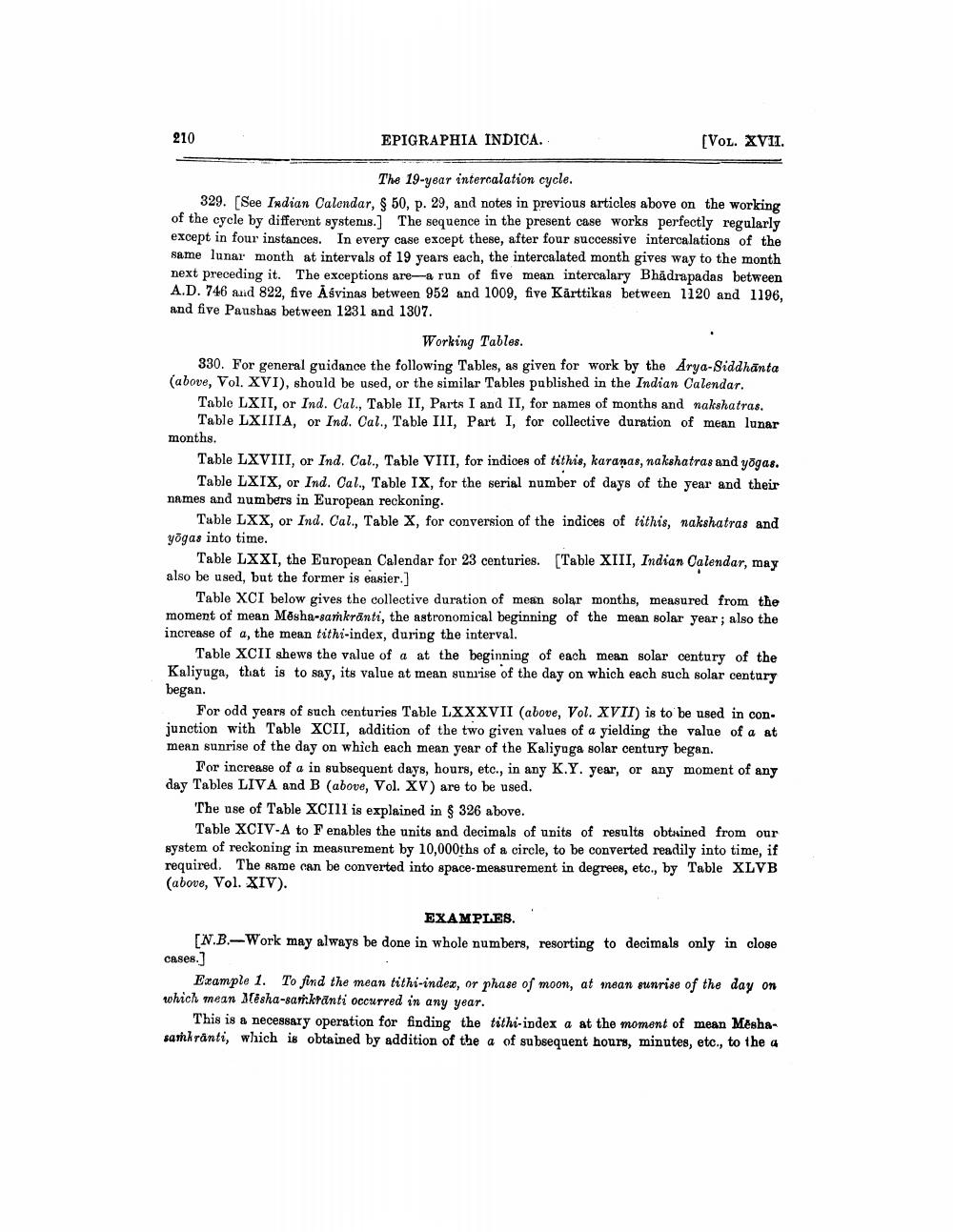________________
210
EPIGRAPHIA INDICA.
[Vol. XVII.
The 19-year intercalation cycle. 329. (See Indian Calendar, $ 50, p. 29, and notes in previous articles above on the working of the cycle by different systemis.] The sequence in the present case works perfectly regularly except in four instances. In every case except these, after four successive intercalations of the same lunar month at intervals of 19 years each, the intercalated month gives way to the month next preceding it. The exceptions are-a run of five mean intercalary Bhadrapadas between A.D. 746 and 822, five Ăśvinas between 952 and 1009, five Kårttikas between 1120 and 1196, and five Paushas between 1231 and 1307.
Working Tables. 330. For general guidance the following Tables, as given for work by the Arya-Siddhanta (above, Vol. XVI), should be used, or the similar Tables published in the Indian Calendar.
Table LXII, or Ind. Cal., Table II, Parts I and II, for names of months and nakshatras.
Table LXIIIA, or Ind. Cal., Table III, Part I, for collective duration of mean lunar months.
Table LXVIII, or Ind. Cal., Table VIII, for indices of tithis, karanas, nakshatras and yogas.
Table LXIX, or Ind. Cal., Table IX, for the serial number of days of the year and their names and numbers in European reckoning.
Table LXX, or Ind. Cal., Table X, for conversion of the indices of tithis, nakshatras and yogas into time.
Table LXXI. the European Calendar for 23 centuries. [Table XIII, Indian Calendar, may also be used, but the former is easier.]
Table XCI below gives the collective duration of mean solar months, measured from the moment of mean Mosha-samkranti, the astronomical beginning of the mean solar year; also the increase of a, the mean tithi-index, during the interval.
Table XCII shews the value of a at the beginning of each mean solar century of the Kaliyuga, that is to say, its value at mean sunrise of the day on which each such solar century began.
For odd years of such centuries Table LXXXVII (above, Vol. XVII) is to be used in con. junction with Table XCII, addition of the two given values of a yielding the value of a at menn sunrise of the day on which each mean year of the Kaliyuga solar century began.
For increase of a in subsequent days, hours, etc., in any K.Y. year, or any moment of any day Tables LIVA and B (above, Vol. XV) are to be used.
The use of Table xCill is explained in 9 326 above.
Table XCIV-A to enables the units and decimals of units of results obtained from our system of reckoning in measurement by 10,000ths of a circle, to be converted readily into time, if required. The same can be converted into space-measurement in degrees, etc., by Table XLVB (above, Vol. XIV).
EXAMPLES. [N.B.-Work may always be done in whole numbers, resorting to decimals only in close cases.]
Example 1. To find the mean tithi-index, or phase of moon, at mean sunrise of the day on which mean Mesha-sansktanti occurred in any year.
This is a necessary operation for finding the tithi-index a at the moment of mean Mēshasankranti, which is obtained by addition of the a of subsequent hours, minutes, etc., to the a




